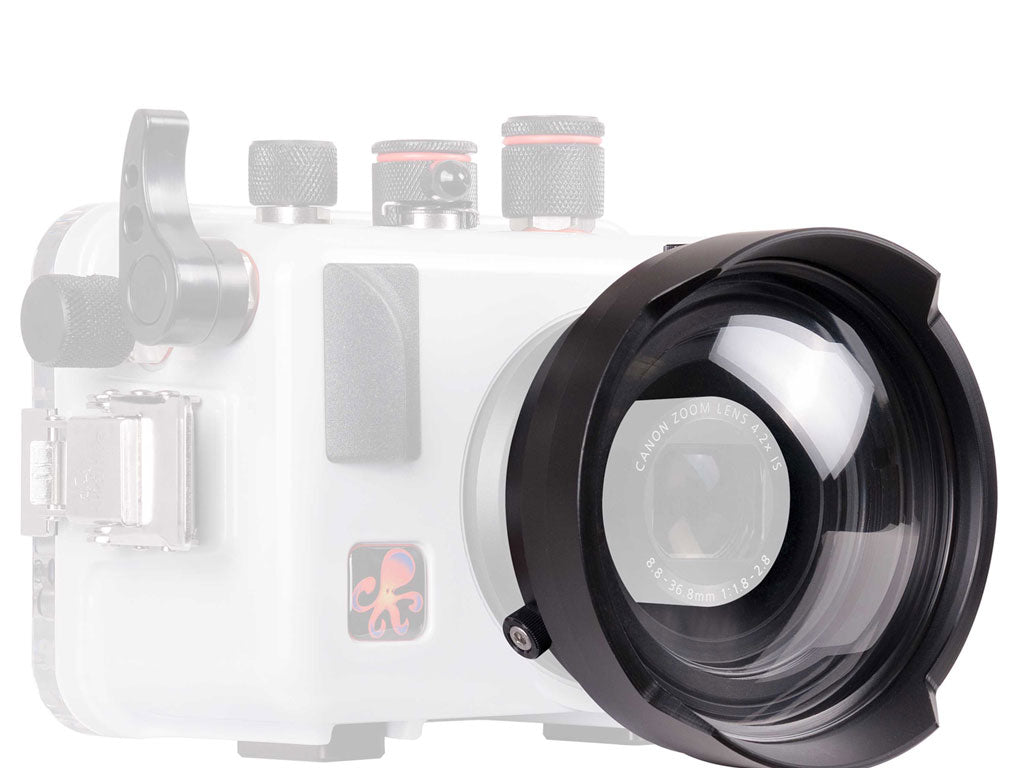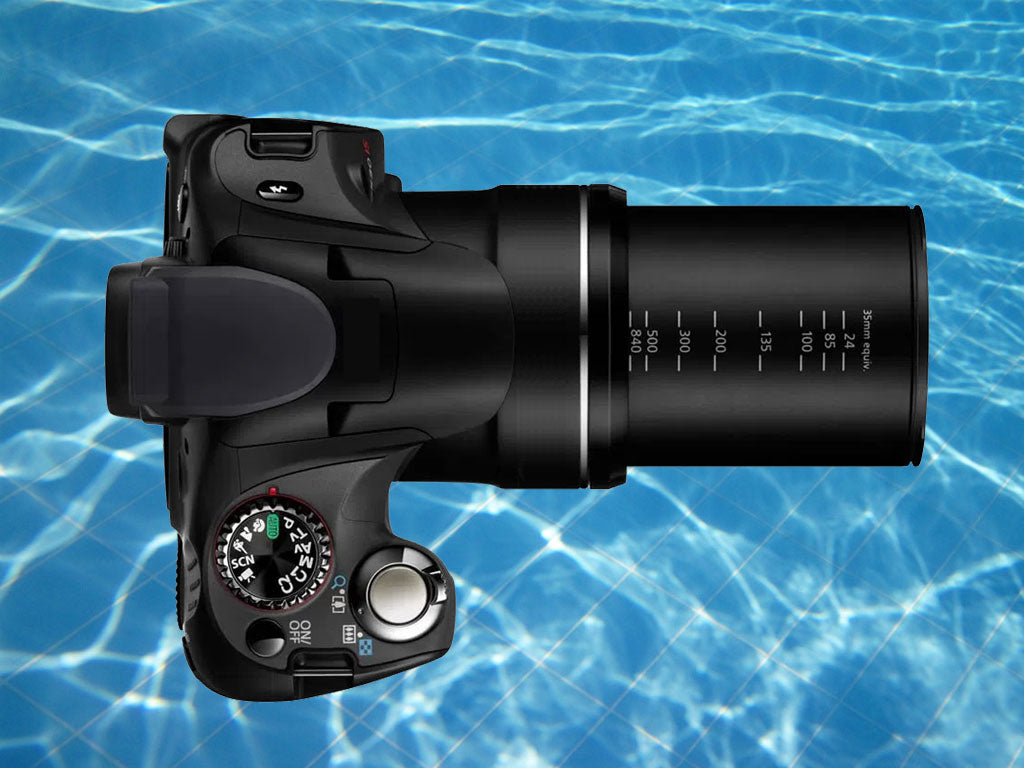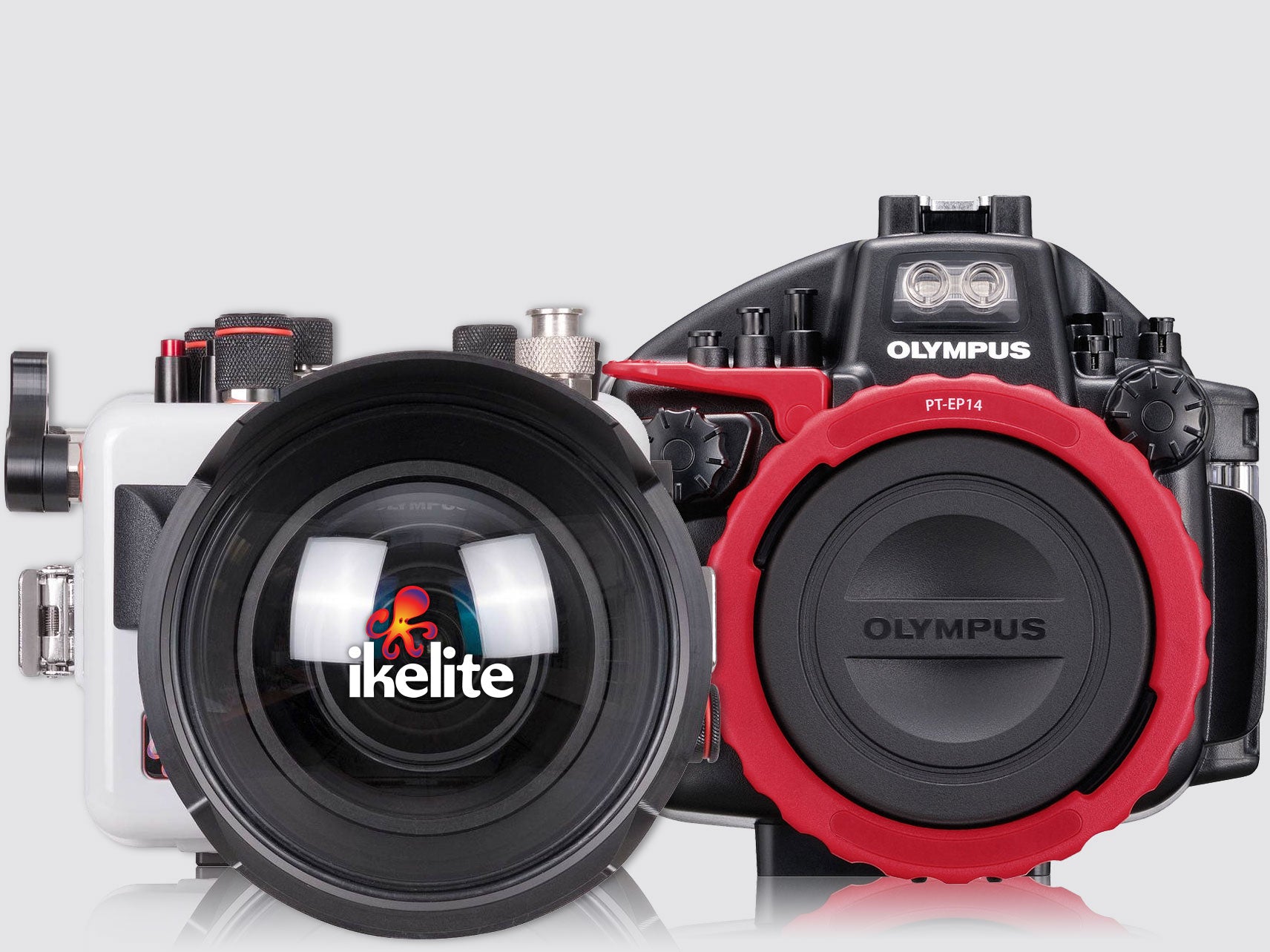In our daily lives above water, it's pretty common to take a photo from 10 to 20 feet away from our subject and achieve a level of color and clarity comparable to what we actually see. Underwater, it's a different story. Light traveling through 10 to 20 feet of even the clearest water can become limp, colorless, and dull. Water absorbs large portions of the color spectrum, stealing the purples, reds, oranges and yellows that make a photo pop. Eventually you're only left with a small assortment of blue, gray, and black tones.
There is still hope for our underwater images! The solution is to take as much of the water out of the equation as possible. Instead of 10 or 20 feet, an ideal average shooting distance underwater is 3 feet (1 m) or less. This maximizes the amount of color reflected by your subject, whether lit by sunlight or an external strobe. Attain neutral buoyancy and then keep moving closer until your subject is within arm's reach—but don't touch!
Light can be tricky underwater in another way - the way it bends. When light passes from water to air through a flat lens, it bends in a way that magnifies the resulting image. So your 2-3 ft close-up is now SUPER close up! That's great for little critters, but bad for things like wrecks, sharks, and the occasional selfie. That's where our wide angle lens comes in.

A wide angle lens bends the light underwater in a different way, allowing us to fit even more into the frame than usual. Squeezing more into the picture means more color, more definition, and a more complete view of our environment. Win-win! And since most of our wide angle options are "wet lenses," we can easily switch between wide and close-up throughout a single dive. "Wet lenses" are waterproofed independently and are actually designed to have a small amount of water between the front of the housing and the lens. After making a safe, controlled descent, remove the wet lens from your housing and use your hand to "sweep" away any trapped bubbles from the housing lens port and the back of the lens. Then replace the lens and start shooting.
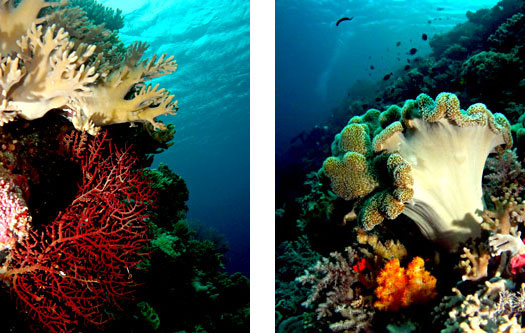
Close Focus Wide Angle
The funny thing is, wide angle lenses are not only good for wide angle shots! Shooting a small "macro" subject can actually be more interesting by including more of its native environment. A wide angle lens allows you to get extremely close, filling a large portion of the image with the smaller subject while still showing its surroundings for scale. Very cool!
A good wide angle lens can turn a mediocre camera into a show-stopper. All of the images on this page were taken with the Ikelite W-30 lens and cameras costing less than US$150!
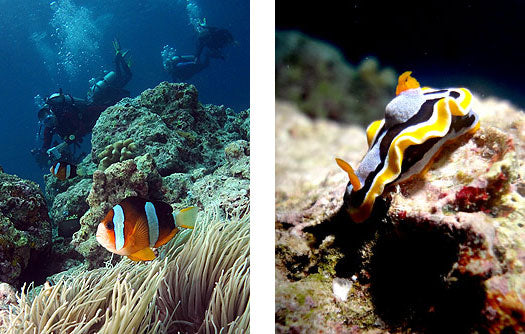
Lighting for Wide Angle Photography
In sunny conditions less than about 60 ft (18 m), adding a color filter to the front of a wide angle lens could be all you need for colorful, natural looking photos. If your camera supports it, manual (or custom) white balance can be combined with the use of a color filter for stunning imagery. Remember to re-set your white balance when your depth changes by more than 10 ft (3 m) or if weather conditions provide fluctuations in the amount of natural light.
If shooting with strobes or constant-on video lights, make sure you have adequate coverage for the lens you're using. Keep in mind that many lighting manufacturers are quoting 100 degree "beam angles," which measure the light's coverage on an imaginary sphere centered at the source. In most cases we also quote "coverage angle," which measures the light output across a flat plane and directly translates to real-world application in terms of your lens' field of view. If you are seeing a hot spot in the center of your wide angle shots, try adding a diffuser to your light source. If only half of your image is colorful, we recommend adding a second (or third) light source.











